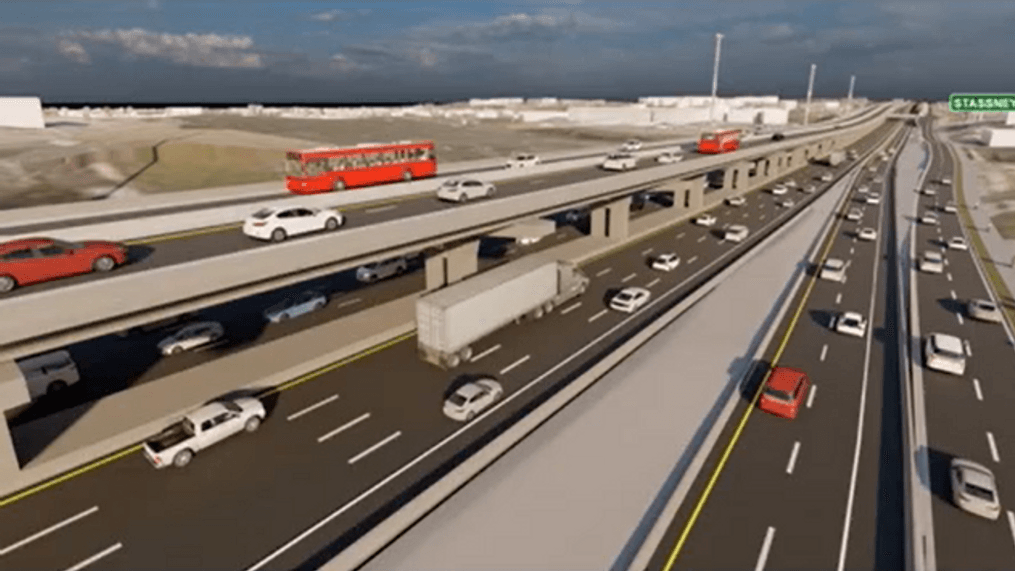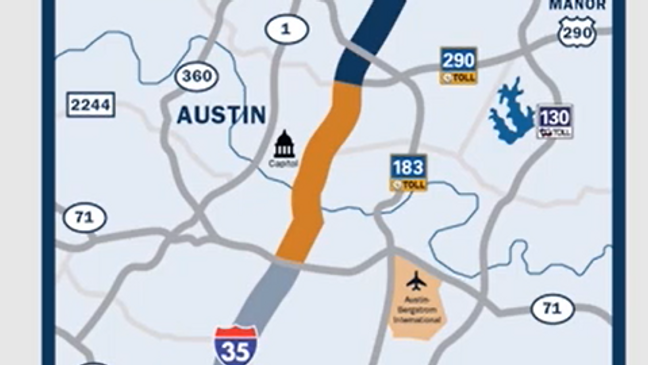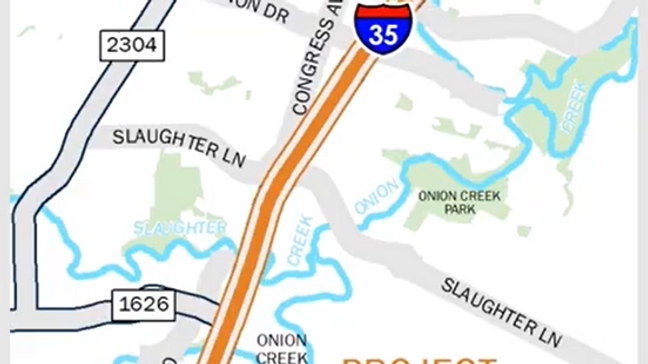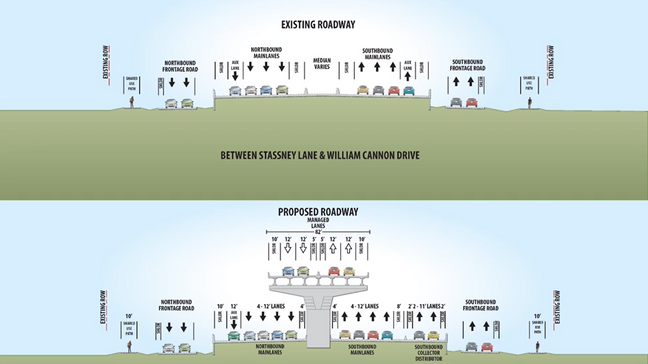TxDOT gives latest on I-35 HOV lane project in virtual stakeholder meeting
As traffic congestion gradually worsens with people starting to return to work and holiday travel around the corner, TxDOT is preparing to move forward with their project to add High Occupancy Vehicle - or HOV - lanes to I-35.
Thursday was the first day of their virtual stakeholder meeting for the I-35 Capital Express South project, and will continue through December 18th.
"We've made some tweaks to the proposal that we went out to the public with last year, and we wanted to give the public an opportunity to see what we're proposing. We're now proposing to make some changes that will add some more safety and mobility items," said TxDOT Spokesperson Diann Hodges. "Our motto is, 'Connecting you with Texas.' To be able to do that, you need to be able to get where you're going. We know I-35 is congested."
This project will add two managed HOV lanes each direction of I-35 from Ben White Boulevard to SH-45 Southeast, including almost 2.5 miles of elevated HOV lanes between Ben White and Slaughter.
These will not be toll lanes, but since they're HOV lanes, you will need to have multiple people in your vehicle to drive on them.
"Elevating the lanes in this area actually eliminates five merging and weaving actions by drivers. If the managed lanes are at the same level as the main lanes, if you're in the managed lane and you want to exit, you're going to have to cross the main lanes of traffic to get off. By elevating, we can have direct access ramps that will allow you to enter and exit without having to weave across those main lanes," Hodges said. "This is what we feel will be the best options for keeping traffic moving and getting it moving faster than the crawl it is right now."
South of Slaughter Lane, TxDOT plans on adding one extended entrance lane and one frontage road lane in each direction.
Overall, this project could add up to 8 new lanes in each direction in parts of this section of I-35.
Drivers said they're well aware they are likely to see red while driving on the major interstate highway any point of the day.
"All the time there's brake lights," said Brian Patino. "It gets real bad sometimes. There's a lot of cars. Sometimes there's wrecks."
TxDOT estimates they will save drivers 18 minutes on the HOV lanes and 14 minutes on the regular lanes during the morning rush. In the evening, they expect to save drivers 13 minutes on the HOV lanes and 4 minutes on the regular lanes.
Additionally, officials expect to reduce crashes by 50 percent by adding these elevated lanes.
"Safety is our number one priority at TxDot. Every project we do, that is first and foremost in our planning. If we can find ways to improve safety, we will," Hodges said.
During an open house for this project in October, 110 of the 176 comments were in support for managed lanes.
This is part of the three projects that make up the I-35 Capital Express Program, with the other two projects addressing needs in the northern and central portions of the interstate highway.
The I-35 Capital Express Central project, which runs through Downtown, will remove the elevated lanes already up, while the south project will build new elevated lanes. However, TxDOT officials say this is important to improve traffic flow, noting different parts of the highway have different needs.
"Our goal is to eliminate the weaving. All of our proposals for central call for taking down the decks. We heard a lot from the community about that. If we were able to tunnel or lower those main lanes, we can actually get people from the managed lanes via a tunnel or a ramp in the central section that will prevent them from crossing the main lanes," Hodges said. "If you look at Downtown, we're constrained there. We have historic buildings on either side, and we can't expand that highway out. Our options are either to go up or go down. We’ve heard from the community for a very long time that they would like to see the decks removed from Downtown."
TxDOT plans on constructing the south and north projects before the central project.
"In the south, we’re not [lowering lanes]. We’re not going down. The way to be able to get the managed lanes and minimize the impact of the properties down south is to take those lanes up, and then we can get people off without having to cross the main lanes, as well," Hodges said.
All told, the south project will cost $300 million for construction. The Texas Transportation Commission, which is TxDOT's governing body, allocated this funding in August 2019. This money is already in their budget from the gas tax and propositions that were passed a few years ago, meaning this project will not cost taxpayers any additional money.
Currently, the project is in its environmental review and project design phase.
Drivers like Patino said they're looking forward to a project like this to be completed, because the roads have not kept up with Austin's population growth.
"It's the population of the people. It's going to get bigger and bigger," Patino said. "Hopefully we get some new roads down here."
As far as what's next, there will be a public hearing for feedback in early 2021. After that, the Texas Transportation Commission would have to approve a contract with a bidder.
They expect to begin construction on the I-35 Capital Express South project in mid-2022, which is expected to take three-to-four years to complete.
You can provide your feedback to TxDOT in this link here.



